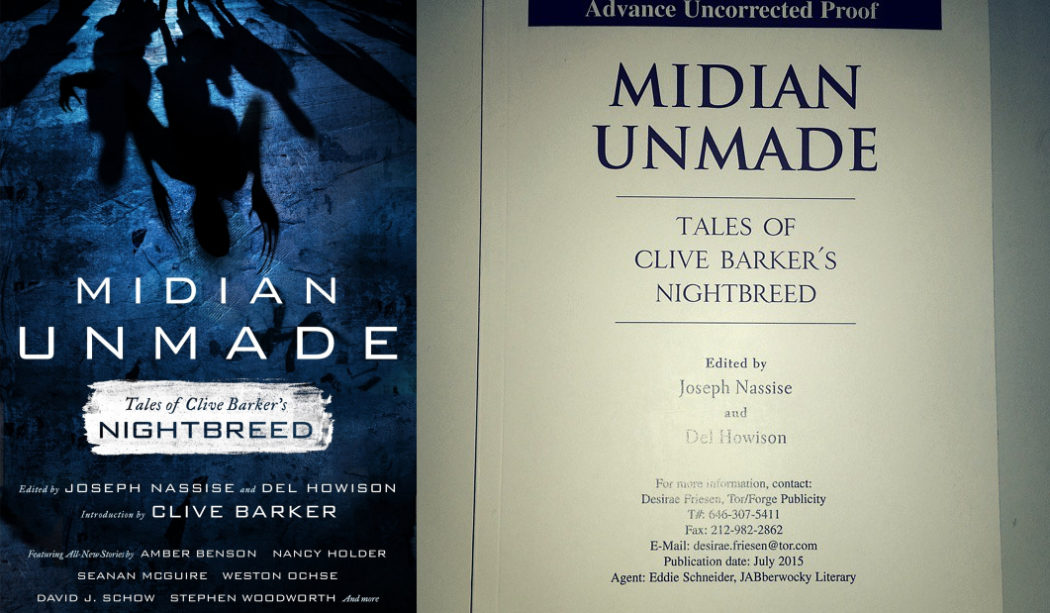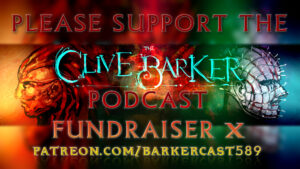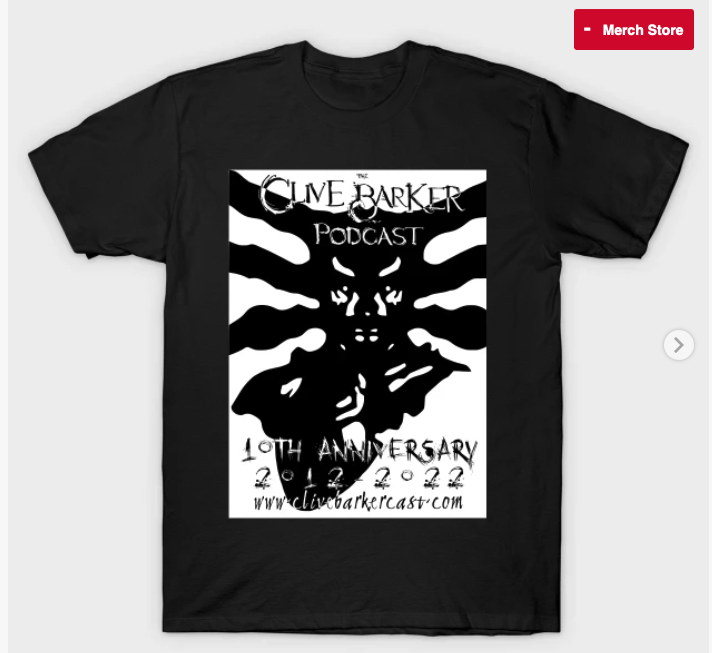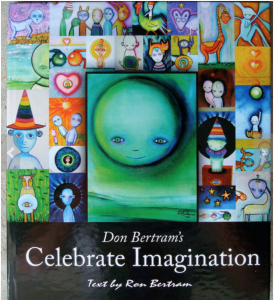Review: “Midian Unmade” Edited by Del Howison & Joe Nassise
“The fiction of the fantastic brims with metaphors for this condition:
tales of people whose cells are protean and souls migrant, people called by
mysterious forces to a place they’ve visited in other lives or states;
a place never understood’ at least until the moment of crisis’ as their own home.
There, perhaps, they may enjoy the company of their own tribe.”
– Clive Barker. Pinewood Studios, September 1989.
Imagine if you could pick up the story of the Tribes of the Moon right after the Nightbreed movie ended and roll with it to your heart’s desire. Incorporate that idea into a book of stories about the Nightbreed, where 17 invited writers and 6 lucky fans get to share their own stories about the Breed as they imagine them. The result is Midian Unmade, edited by Del Howison (Dark Delicacies) and Joseph Nassise for TOR Books.
This project called for submissions long before the Director’s Cut of Nightbreed came out, back in the days of the Occupy Midian campaign. The premise was simple: “MIDIAN UNMADE […] picks up where CABAL left off, chronicling the lives of the ‘Breed as they disperse into the world after the fall of Midian. We’re looking for stories of struggle and despair, of hope and sanctification, as the former inhabitants of Midian try to adapt to the world from which they retreated years before. A world that does not want them. A world that will hound them, hunt them, simply for the crime of being different.“
Submissions would be paid and limited up to 5’000 words. (Disclaimer: I did submit a story that didn’t make it. You can read it here.)
Opening the book is a preface by Joseph Nassise and an Introduction by Clive Barker. However, the introduction was reprinted from the Titan Books Nightbreed Chronicles photobook from 1990. This book has long since been out of print and it’s a beautiful introduction that always bears re-reading. I think Clive explained his intentions and his vision in this introduction like he never did before— he wrote it while at Pinewood Studios in September of 1989, right as he was committing his vision to celluloid, at the height of his craft, immersed in imagined creatures made flesh. But in the Foreword to CLIVE BARKER’S NIGHTBREED: The Making of the Film book (Fontana/Collins) in 1991, you can read through the opening line that opens this Foreword and see the despairing interference this movie was suffering when Clive says: “Movies change; and change; and change.” But that’s a story that’s since been settled by the Nightbreed Director’s Cut release.
In “Return to Midian“, Lisa Majewski explains the intention behind the stories we are about to read : “Although Barker engineered Midian’s destruction, he also left among the ruins pieces of hope. For the Nightbreed came together as one, not because they were the same, but because they were different.“
This hope is what fueled the creation of this book, featuring writers like Karl Alexander (Time After Time), actor, writer, and director Amber Benson (Tara Maclay on Buffy the Vampire Slayer), NYT bestselling author Nancy Holder; Hugo and John W. Campbell Award winner Seanan McGuire; Bram Stoker Award winner Weston Ochse; David J. Schow, winner of the World Fantasy Award (The Crow screenplay), and many others.
I’m sure we all have a different view in our dreams about what Midian was like and how it would return to glory. This movie has an enormous cult following, revitalized in 2012 by the efforts started by Russell Cherrington‘s edit of Nightbreed known as the Cabal Cut, and then the fan-fueled movement Occupy Midian that grew into what’s currently the largest Nightbreed active community ever assembled online and was one of the main driving forces that pushed for the release of a restored Director’s Cut of Nightbreed, at one point creating a petition that reached almost 14’000 signatures. This is a testament of how many people have been touched by the themes of this movie and how Midian calls to a lot of people out there— “Shangri-la on dope“. We do love it there.
The call for submissions raised an army of stories, the vast majority of which didn’t make it to this anthology. Only about 6 lucky fans got to see their story included here. I strongly urge every other story teller that didn’t make it into Midian Unmade to share it with the community at Occupy Midian on Facebook.
The stories in Midian Unmade bring back some old but mostly new characters, and one of the most popular submissions during the selection process were stories about Babette. Seanan McGuire opens the book with one such story, “The Moon Inside“. Kevin J. Wetmore shows us the Drummer’s adventures after the fall of Midian in “The Night Ray Bradbury Died“. Nancy Holder takes us into the secret underground hideout of Corazón in “Another Little Piece of my Heart“, where a young female named Coeur must come to terms with a choice between tribal tradition or following her little monstrous heart; Kurt Fawver writes “The Kindness of Surrender“, where another young female Breed, Asteria clashes with the normal life her “Natural” adoptive mother would like her to surrender to. Next is The Angel of Isisford by Brian Craddock, Upendra, a 4-armed creature and Nhuwi (a young aboriginal) bring a traveling puppet show to Isisford, in an effort to locate fellow Breed, but what they find is very hungry. That’s followed by Pride by Amber Benson, where Abra, another young female Breed turns the tables on some very human predators. Button, Button by Ernie W. Cooper brings the spectre of Ol’Button Face, Dr. Decker and how his face haunts the nights of infant breed; once such orphan, Simon, lives under a house and makes friends with a special boy named Elliot, who is being bullied by an older boy. I Am The Night You Never Speak Of, by C. Robert Cargill, a profanity-laden stream of consciousness from the brain workings of Bacchus, a member of Midian who’s a truly lost soul, a predator. His prey aren’t humans, but he’ll gladly devour his own kind.
Weston Ochse’s story “The Devil Until the Credits Roll” was a bit of a head scratcher for me; I couldn’t get into this one at all, and had a very hard time getting through it. It’s a very strange, and very confusing story and I found myself wondering if the author had ever watched the movie or read Cabal at all. Full of military lingo, field reports and barbaric acts of violence, it shows the author’s connection to his military deployments (this story offers as a subtitle the information that it was written while deployed to Afghanistan). The monster in this story is confusing and the story introduces callbacks to previous events we’ve never seen, that make it even harder to understand what’s going on and the motivations of the characters. It’s a testosterone-filled military fantasy that would please the Sons of the Free more than any Nightbreed fan, unfortunately. In my opinion, it misses the point of Clive’s world completely. This is the odd story out.
The Lighthouse of Midian (Ian Rogers) is a true original and a palate cleanser after the previous story; again, a young female Breed called Luna becomes the beacon of hope to gather the scattered Breed out in the world, calling to them like a Lighthouse. Nerine Dorman brings us Lakrimay, a story where a girl living in an abusive home makes friends with a motherly green lady who brings her treasures. In Shaun Meeks’s And Midian Whispered Its Name, Kaleb dreams of Midian, but when he goes to see a Carnival and enters a tent called Revelations, following his dreams he gets more than he bargained for when he finds out the caged freaks are real and a man with a mask makes him an offer he can’t refuse. This is followed by Cell of Curtains, from Timothy Baker, a really good story about Ozlet and Manda, two lovers who carry Midian in their heart as members of a company of circus performers, complete with stereotypical Russian strong Man Serge, who says things like “Serge will give you pride of Soviet Russia“. Their waning powers are being drained by this life of spectacle, and they are sick of it. Tamara, by Paul J. Salamoff is a young female shape-shifting Breed blessed with talons and barbed protrusions, who decides to make ammends for killing one of the Sons of the Free during the storming of Midian, but redemption can’t be faked, only earned as she will discover the hard way. In Karl Alexander’s Raphael’s Shroud, a cat, single witness to a murder is helped back home by an “Angel”. Wretched (Edward Brauer) tells us the story of a family vacationing at sea, and a mysterious fisherman whose parasitic skin condition is more unsettling that it would seem at first. A Monster Among Monsters is the work of a duo, Stephen Woodworth and Kelly Dunn; we are given a glimpse into the history of the Pariah, a creature who denied Baphomet’s offer to be His lover, and paid a high price for it. The Jesuit’s Mask was written by Durand Sheng Welsh and tells us the story of the Mongrel and Button Face hunting the relics of Baphomet. In Rob Salem’s story, Rook saves a woman attacked by a man and finds out she knows where the rest of the Breed are. In David J Schow’s story Collector, Aurora, a monstrous-looking member of the Collector tribe living on the streets from a young age since the destruction of Midian is saved from a group of humans by another Breed who will make her understand who, or what she is. Lilith Saintcrow’s Bait and Switch has two female Breed dreaming of a New Midian, only to find the low points of other Breed’s despair can lead them to tun on their own, and finally Christopher Monfette’s The Farmhouse, is a powerful and beautiful story about a young boy whose mother lays on her death bed, until he finds the strange monsters taking refuge from daylight, stranded in their old barn, bringing with them the possibility of life beyond death.
These are the stories of Midian Unmade, a trip through a collective imaginarium, available in hardcover and paperback form.
This review took longer than I expected to write. I had to take this book in slowly, and I did enjoy some stories more than others, maybe because I have such a great deal of love for the original novel/movie and Clive Barker’s literary voice, that any other attempts to emulate the Breed in writing sometimes feel like they fall short. But I’ve learned with this book to accept other voices and other ideas about the Nightbreed. This anthology was fully sanctioned by Clive and it was very generous of him to let other fans use these characters or add to the existing ones. Now there are a few things to mention, about the world that these stories take us into; there was some confusion regarding how each author’s idea of the proper ending for the Nightbreed movie was. I think a few authors used the continuity of the theatrical cut of Nightbreed while others used the novella’s continuity. In some, Decker reappears, which means they found him too interesting to stay dead. Of course, the Director’s Cut was put together some time after this book was edited.
I was satisfied with a lot of stories in this anthology although in some cases, it seemed that the authors wanted too hard to leave their own mark in the mythology, to expand it, with varying degrees of success. A recurring main character in a lot of stories was the single young, female Breed, apparently vulnerable but fierce and monstrous when pushed. While some used it well, the repetition of that motif was noticeable. The trangressive nature of the Breed on the run was also fairly bathed in human blood and human meals, a fact that seems to celebrate their monstrous nature but in a way that has a price: it’s hard to feel sorry for some of the monsters in this book because they don’t follow their own Laws and often kill their own brothers. I think there’s a missed opportunity here for some stories to really tap into what made the Breed fascinating and easy to relate to, and it’s not their blood lust. The original story and movie had a dream-like quality when Lori descends into Midian; we see the miraculous hiding from the mundane, preserved as the last remnants of the Great Tribes who the Naturals have driven almost to extinction. Despite their eclectic, in some cases unique natures, they are all united under Baphomet, they are brothers and sisters; so in stories where Breed turn on Breed, it feels like there’s a missed opportunity there to steer this into the note of hope that the original story ends on. There was no prophecy being fulfilled here, in almost any of these stories. Most of these creatures are lost, afraid and denied their own dignity.
There’s a price to be paid by trying to place these creatures in our human, modern world. It brings them closer to us, and therefore, makes them seem less fantastic. A few stories place the Breed in carnivals and freak shows, acting for the crowds, making a pithy living. While I understand that would be a common setting, I personally didn’t think it was the best choice for these creatures, escaping the Humans in the night while carrying their own God, to end up in a position of being explored by humans again. It takes their dignity and their glory and diminishes it to a mere freak spectacle. I would have liked to see more stories where the Nightbreed carved their own place, their own home and showed us what they were capable of, instead of surviving from scraps in small isolated groups. In that sense, some ambition was lacking from these stories, and we end up with most of them showing us small isolated groups, or complete loners, lost and afraid. While I could see some Breed ending up like this, I think a lot more would have followed their own path and conquered their own home somewhere. A few stories hinted at this, like Rook and The Lighthouse of Midian, but more often than not, the Breed are in mid-transit somewhere, looking, suffering, hoping, eating or being eaten. Reading 23 stories in a row of this, you have to pace them to avoid feeling lost and scared yourself.
I wanted to see more of the Breed constructing a new society, finding a new home, actively looking for their brothers and sisters, having the glowing limbs of Baphomet guide them (who’s an absent God in this, mere shards used as artifacts when he is mentioned at all – In Monsters Among Monsters, Baphomet is a Patriarchal vengeful God, striking the Pariah for the offense of refusing to be His mate) and coming to terms with the loss of Midian. They are strong and they have Cabal now. Unfortunately, Cabal was absent from all of these stories; maybe most authors felt intimidated about bringing him back and giving him a voice? In fact, in a few stories Cabal is almost cursed and called a false prophet. An absent prophet that doesn’t agree with the Prophecy we’ve been given in Nightbreed. I fear this may be due to the fact that the ending of the theatrical cut was deeply flawed and incomplete, giving the impression that Boone and a human Lori would go find their own way while the Breed are left to find a new Midian, alone in a barn. However, the new ending of Nightbreed is much more in tone with the novella, and Cabal and Lori become eternal lovers sharing a blood bond with the rest of the surviving Nightbreed, leaving to find a new secure haven for their brothers and sisters, and returning on the next wind, maybe…
All in all, this book will expand your ideas about the Breed and not only transport you into new adventures but also, if you’re lucky, push you into making up your own stories about the fate of the Tribes of the Moon as they travel the world in their Diaspora. Give it a try.



























